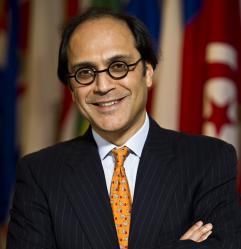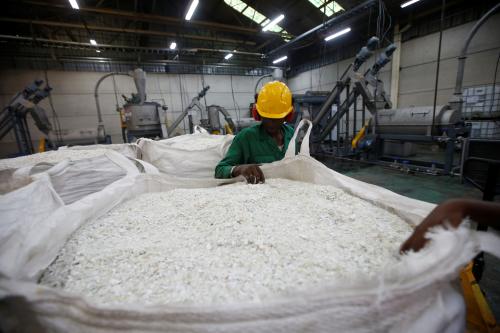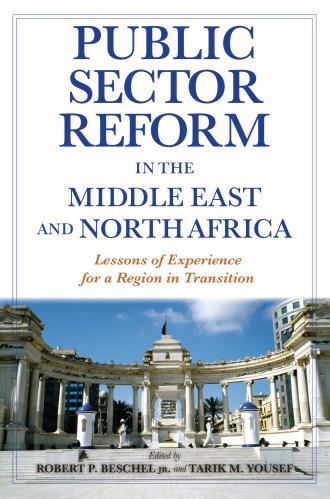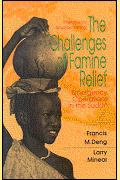Content from the Brookings Institution India Center is now archived. After seven years of an impactful partnership, as of September 11, 2020, Brookings India is now the Centre for Social and Economic Progress, an independent public policy institution based in India.
The chapter is part of a briefing book ‘India and Africa: Forging A Strategic Partnership’ edited by Dr. Subir Gokarn, Dr. WPS Sidhu and Shruti Godbole.
India has only 29 embassies in Africa, while the continent has 54 countries — or 55 if one counts the disputed Western Sahara as a country. Given the proximity both in terms of geography and colonial history, this level of disengagement between India and Africa is disappointing, and should be remedied soon. While there has been migration from India to many parts of Africa and sizable numbers of African students travel to India to get educated, in general, there is a rather limited understanding within India of the continent next door. Unfortunately, in India and elsewhere around the world, the narrative about Africa perpetually suffers from — what the Nigerian author Chimamanda Adichie cautions against in a widely-viewed TED talk, the dangers of a “single story.” The single story is one that displaces the far more multilayered reality about an unfamiliar people or a country or a region and can lead to missed opportunities and very costly mistakes. Most recently, the global food giant, Nestle, downsized its operations in Africa. It had gone too big too fast on the continent because its managers had cast Africa in terms of a single story called “the next Asia”. Belatedly, the same managers realized that the two continents, Africa and Asia, are, indeed, continents apart.
For generations, that single story for Africa had been one of despair, famously headlined as the “Hopeless Continent” by The Economist magazine only 15 years ago. Of course, vestiges of the old story elements are still around; the recent horrors of the Ebola epidemic, twin campaigns of terror of Boko Haram on one side of the continent to AI-Shabaab on the other and persistence of civil unrest from Burkina Faso to the Democratic Republic of Congo. However, the newer single story about Africa is that of “rising Africa.” It is time to get beyond this new single story as well. Even Barack Obama – the first Kenyan-American president and the face of the unforgettable “Hope” poster – began his last tour of Africa with frequent references to the “rising Africa” theme. It was only towards the end of his tour that he acknowledged the many nuances of the region: from calling out the evils of tyranny based on gender or sexual orientation to the corrosive effects of “presidents for life”. If there is a lesson to be learned from his journey, it is that we must all show the courage and wisdom to tackle many stories and many un comfortable truths, along with a celebration of Africa’s true potential.
India’s political and business leaders can, in parallel, take a page from Obama’s travelogue and journey away from the single story. Consider three ways in which their stories would multiply:
There is no single Africa
Africans are far from being a single people . While technically comprising 54 or 55 countries, the continent’s political boundaries are a relatively recent colonial legacy; there are potentially even more “nations” within Africa. Even among the official countries, there is unevenness and many contradictions. Between the two biggest countries – Nigeria and South Africa – that account for 63 percent of Sub-Saharan Africa’s total GDP, future prospects vary considerably. Nigeria is expected to grow over 5 percent, while the South African economy is expected to grow at a much lower 1.6 percent. The latter, however, is a more diversified economy, while the former is vulnerable to a collapse in oil prices – and yet has the greater entrepreneurial zeal and energy. Ghana, and Zambia are examples of countries that have suffered from large macroeconomic imbalances and resulting inflationary pressures. Others, such as Kenya, are tourist-reliant, and the recent bad news from the continent regarding Ebola or – much more justifiably — terrorism has served to scare off travelers. Rwanda and Botswana, often held up as models, represent just over 14 million people in a continent of over a billion people.
At the same time, the effects of shared histories often engender a kinship that cuts across the continent. In certain contexts, sub-regional affiliations, such as ECOWAS or SADC, are even tighter. On the other hand, when a team from an African country competes in the FlFA World Cup or an African wins the Nobel Prize, the continent rejoices. In other words, even a story along the lines of Africa as a collection of disparate peoples or nations risks missing the point.
There is no single measure of Africa as a market
Much of the enthusiasm as far as business in Africa is concerned has been based on a narrative of a growing middle class. Media reports and company presentations have repeated statistics that paint an upbeat picture; how often have we seen McKinsey’s “Lions on the Move” estimates of Africa’s consumer spending to grow from $860 billion in 2008 to$1-4 trillion in 2020, or the African Development Bank’s sizing of the African middle class at 330 million people in 2 0 11, growing to 500 million by 2030 or the IMF/ The Economist, forecast that seven out of the 10 fastest-growing economies would be African?
A very different picture emerges from an analysis done by Standard Bank that sizes the mid dle class across t he eleven countries representing half of sub-Saharan Africa’s total GDP at only 22 million people by 2030.
Unfortunately, the statistics – optimistic or sobering — themselves are hard to trust. According to the 2014 Africa Survey, released by Good Governance Africa, 17 African countries have not conducted a census in the past de cade and s have not conducted a census in over 20 years. Nigeria ‘s GDP in 2012 was estimated to be $ 26 8 .7 billion. In 2013 it almost doubled after the government “rebased” its estimates after a lapse of 24 years. According to Morten Jerven, author of Poor Numbers, the statistical capacities of sub-Saharan African economies have fallen into disarray and simply cannot be trusted. Far from there being more than a single story, it is likely that we may even know how many stories there really are for sizing-up the true African market opportunity.
There is no single playbook for Africa
For businesses, there are several implications for how to evaluate the African opportunity and how to approach the market.
First and foremost, it is necessary that executives and country managers get comfortable with multiple stories and prepare to process them simultaneously.
Second, it is essential for companies to prepare to step out of their comfort zones. Many will have to invest in parts of the market value chain that may be far from the company’s zone of competence. Just as Coca Cola, Diageo and SABMiller invest in African smallholder fruit and barley farmers to enhance their productivity, to make their own supply chains more reliable, Indian companies – such as Maruti Suzuki or Larsen & Toubro, among scores of others, including many small and medium businesses — that seek to do business in Africa must find ways to invest in the supply chains and distribution and service networks.
Third, no player can take on the many, known and unknown, gaps in the wider African business context on its own. Developing the context, growing the market and growing with it will require a multiplicity of partnerships, with home-grown companies, smaller ventures, NGOs and even governments. The seed-to shelf agri-business company, Olam, for example, has a broad portfolio of collaborations in Africa with companies, NGOs with specific technical capabilities, agricultural associations and governments. This creates a mechanism to not only share risk, but to create leverage and have a better grasp of the gaps that need to be closed and on-the-ground specialized capabilities that can help close them.
Finally, there is no single winning formula for a market such as Africa’s. A company, such as Nestle, did many of the right things investing in “best practice” sustainable and inclusive business models recommended for such nascent markets. The benefits of its scale and global resources cannot be under-estimated; in 2012, over 133,000 people in the Africa/Middle East region earned their living from Nestle – of whom only 26,000 were employees. Simultaneously, as Nestle struggled to find the sweet spot among African consumers, others, particularly home-grown companies, did better at a more local level at a smaller scale. Moreover, it could be argued that the true untapped potential of Africa may be with its youth; more than half of all Africans are now younger than 25. With few opportunities in the formal sector and no safety net many young people work in the informal sector or in small family businesses. The ubiquity of mobile phones is creating clusters of digitally enabled entrepreneurship in some regions, particularly in Kenya. Combined with increasing urbanization, there are chances of an African entrepreneurship boom. The entrepreneurial ecosystem could evolve as a powerful partner – as supplier or customer – in growth. It may even become the main driver.
It is troubling to read about Africa in overly simple terms that veer from the irrationally exuberant to politically correct to post-colonial patronizing. Even President Obama, whose own book “Dreams From My Father” on his links to Africa, sub-headed: A Story of Race and Inheritance, realized that by the end of his trip the inheritance from Africa has more than one story. It would be wise for business leaders from India, the U.S. and elsewhere, who have Africa on their radar, to do the same.







